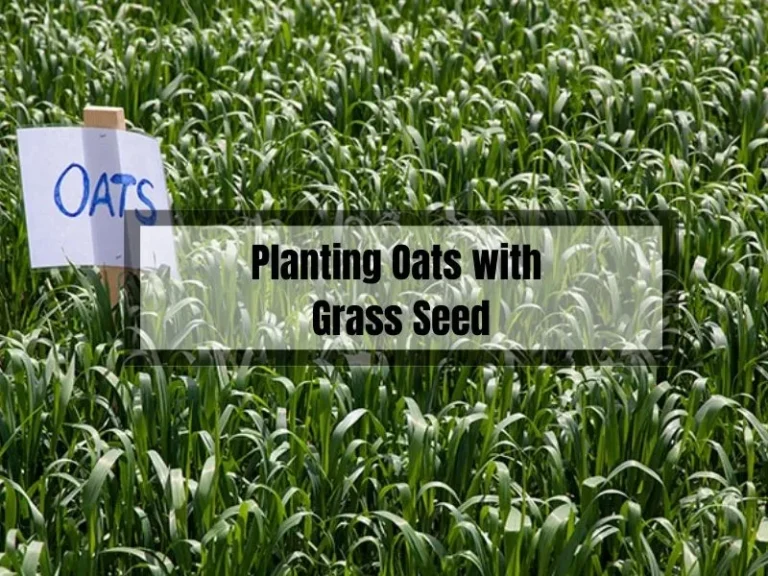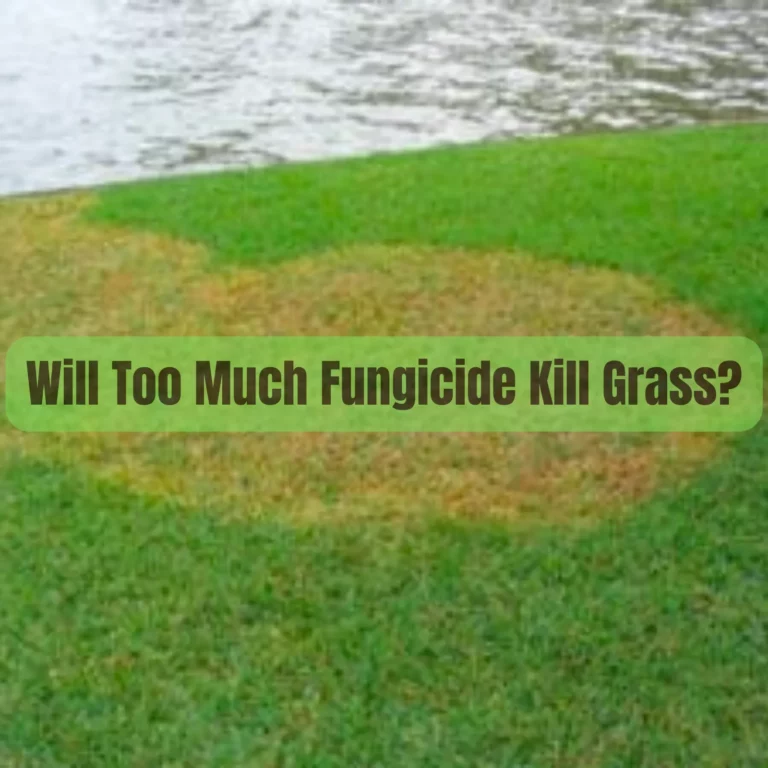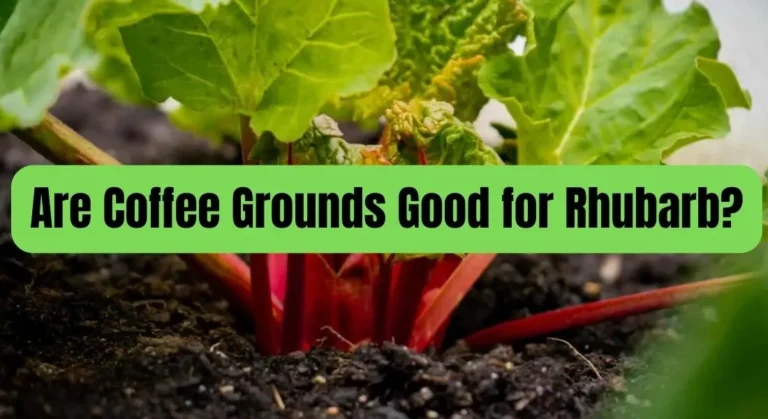How Much Straw to Cover Grass Seed: A Guide for a Lush Lawn
If you’re looking to start a new lawn or rejuvenate an existing one, you’ll need to know how much straw to cover grass seed. Straw is a popular mulching material that can help improve germination and protect your seedlings from the elements. However, using too much or too little straw can have negative consequences, so it’s important to find the right balance.
Understanding Grass Seed Coverage is key to determining how much straw you’ll need. The recommended coverage varies depending on the type of grass you’re planting, but generally ranges from 10 to 20 seeds per square inch.
Once you have an idea of how many seeds you’ll be planting, you can calculate how much straw you’ll need to cover them. While there’s no one-size-fits-all answer to this question, there are some general guidelines that can help you determine the right amount of straw for your lawn.
Key Takeaways
- Understanding your grass seed coverage is key to determining how much straw you’ll need
- Using too much or too little straw can have negative consequences
- Calculating the right amount of straw for your lawn can help improve germination and protect your seedlings from the elements
Understanding Grass Seed Coverage
Types of Grass Seed
When it comes to grass seed coverage, different types of grass seed require different amounts of coverage.
For example, fine fescue grass seed only needs a thin layer of coverage, while tall fescue and Kentucky bluegrass seed require more coverage. Before planting grass seed, it’s important to research the type of grass seed you’re using to ensure you’re providing the appropriate amount of coverage.
Factors Affecting Seed Coverage
Several factors can affect the amount of coverage needed for grass seed. The first factor is the size of the seed. Smaller seeds, such as fine fescue, require less coverage than larger seeds, such as tall fescue.
The second factor is the method of planting. If you’re using a seed spreader, you may need more coverage than if you’re planting the seed by hand. Finally, the climate in your area can also affect the amount of coverage needed. In dry climates, you may need to provide more coverage to keep the seed moist.
Remember, providing the appropriate amount of coverage is crucial for the success of your grass seed. Research the type of grass seed you’re using and take into account the factors that can affect coverage to ensure your grass seed has the best chance of thriving.
Benefits of Straw Mulch
Using straw mulch for your grass seed has several benefits that can help promote healthy growth. Here are a few:
Moisture Retention
One of the main benefits of using straw mulch is its ability to retain moisture. Straw helps to keep the soil moist, which is essential for grass seed germination. According to Lawn Phix, placing straw over new grass seeds helps to lock in moisture, which means you don’t need to water as much to encourage grass seed germination.
Protection Against Erosion
Another benefit of using straw mulch is that it helps to protect the soil from erosion. Straw helps to hold the soil in place, preventing it from washing away during heavy rains or strong winds.
This is especially important if you live in an area with steep slopes or loose soil. According to The Garden Counselor, straw should be spread over the grass seeds so that they will slightly cover the grass seeds, allowing light to fall on the grass seed while shielding it from dangers as well.
Weed Suppression
Straw mulch can also help to suppress weeds. By covering the soil with straw, you can prevent weed seeds from germinating and growing. This can save you time and effort in the long run, as you won’t have to spend as much time weeding your lawn.
According to Crabgrass Lawn, adding straw will help you maintain a consistent moisture level that promotes seed cover germination. Grass seed planted in direct sunlight is nearly impossible to keep moist.
In summary, using straw mulch for your grass seed can help to retain moisture, protect against erosion, and suppress weeds. By taking advantage of these benefits, you can help to promote healthy growth for your lawn.
Calculating Straw Needed to Cover Grass Seed
When it comes to covering grass seed with straw, there are a few calculations you need to make to determine how much straw you will need. Here are some tips on how to calculate the amount of straw needed to cover your grass seed.
Area Measurement Techniques
The first step in calculating the amount of straw needed to cover your grass seed is to measure the area you need to cover. There are a few techniques you can use to do this:
- Using a Measuring Wheel: This is a simple tool that you can roll along the ground to measure the area. It is best used for measuring larger areas, such as a lawn or a field.
- Using a Tape Measure: This is a more precise method of measuring smaller areas, such as a garden bed.
- Using Google Maps: You can use Google Maps to measure the area of your lawn or field. Simply zoom in on the area you want to measure and use the “measure distance” tool.
Straw Coverage Ratios
Once you have measured the area you need to cover, you can calculate the amount of straw needed. The amount of straw needed will depend on the coverage ratio you choose. Here are some common coverage ratios:
- 1 Bale per 1,000 Square Feet: This is a common ratio for covering newly seeded lawns. It provides good coverage while still allowing sunlight and moisture to reach the seeds.
- 2 Bales per 1,000 Square Feet: This ratio provides more coverage and is best used for areas with heavy foot traffic or where erosion is a concern.
- 3 Bales per 1,000 Square Feet: This ratio provides maximum coverage and is best used for areas with extreme erosion or where weed control is a concern.
Keep in mind that these ratios are just guidelines. The amount of straw needed will also depend on the type of straw you are using and how tightly you pack it. It’s always better to have too much straw than not enough, so err on the side of caution when calculating how much straw you need.
Application Techniques for Straw Mulch
When it comes to applying straw as mulch over grass seed, there are a few things to keep in mind. In this section, we will cover some tips on how to distribute straw evenly and how deep to apply it.
Even Distribution Methods
To ensure even distribution of straw, you can use a few different methods. One way is to use a seed spreader to distribute the straw over the lawn. This method allows for even coverage and helps to prevent clumping of the straw.
Another way to distribute the straw is by hand. You can sprinkle the straw over the lawn, making sure to spread it out evenly. This method is best for smaller areas and may take a bit more time and effort.
Depth Considerations
When applying straw mulch over grass seed, it is important to consider the depth of the straw. Applying too much straw can prevent sunlight from reaching the seed, hindering germination. On the other hand, not enough straw can leave the seed exposed and vulnerable to the elements.
Aim to apply a thin layer of straw, about 1/4 to 1/2 inch deep, over the grass seed. This will help to retain moisture and protect the seed while still allowing for adequate sunlight to reach it.
Overall, applying straw mulch over grass seed is a simple and effective way to promote healthy growth. By following these tips for even distribution and proper depth, you can ensure a successful lawn renovation project.
Maintaining Your Newly Seeded Lawn
Congratulations on seeding your lawn! Now that you’ve put in the effort, it’s important to maintain it properly to ensure healthy growth. Here are some tips on how to maintain your newly seeded lawn.
Watering Best Practices
Watering is crucial to the success of your lawn. The general rule of thumb is to water your lawn every day for the first two weeks after seeding. After that, gradually reduce the frequency of watering to twice a week. Be careful not to overwater, as this can lead to fungus growth and other problems. Keep the soil moist, but not soaked.
When to Remove or Add More Straw
Straw is a great way to help keep the soil moist and protect the seeds from birds and other pests. However, it’s important to remove the straw once the grass has started to grow. Leaving the straw on too long can block sunlight and prevent the grass from growing properly. You can tell when it’s time to remove the straw by checking the grass. Once the grass is about two inches tall, it’s time to remove the straw.
If you notice that the soil is drying out quickly, you can add more straw to help retain moisture. Be careful not to add too much, as this can block sunlight and prevent the grass from growing properly. A good rule of thumb is to add a thin layer of straw, about a quarter inch thick.
By following these tips, you can help ensure healthy growth for your newly seeded lawn. Remember to be patient and consistent with your watering and straw maintenance. With time and care, you’ll have a beautiful, lush lawn to enjoy!
Frequently Asked Questions
What’s the best material to cover new grass seed?
Straw is the most commonly used material to cover new grass seed. It is inexpensive, readily available, and provides a light cover that allows sunlight and air to penetrate while protecting the seed from birds and other pests. Other materials such as hay, leaves, or even compost can also be used, but they may not be as effective as straw.
How do I calculate the amount of straw needed per square foot for grass seed?
A general rule of thumb is to use one bale of straw per 1,000 square feet of lawn area. This should provide a light cover that will not smother the grass seed.
However, the amount of straw needed may vary depending on the thickness of the cover you desire. Keep in mind that using too much straw can lead to fungal infestation, while using too little can result in bare spots on the lawn.
What are some effective alternatives to straw for covering grass seed?
If straw is not available or desirable, other materials such as grass clippings, shredded leaves, or even burlap can be used to cover grass seed.
These materials can provide similar benefits to straw, such as protecting the seed from birds and other pests and retaining moisture. However, they may not be as effective at allowing sunlight and air to penetrate.
Can using too much straw harm the growth of new grass seed?
Yes, using too much straw can lead to fungal infestation, which can harm the growth of new grass seed. It is important to use a light cover that allows sunlight and air to penetrate while protecting the seed from birds and other pests. A general rule of thumb is to use one bale of straw per 1,000 square feet of lawn area.
How long should straw remain on newly seeded areas?
Straw should remain on newly seeded areas until the grass seed has germinated and grown to a height of at least 2 inches. At this point, the straw can be removed or left in place to decompose and provide nutrients to the soil. Keep in mind that leaving straw in place for too long can lead to fungal infestation and other problems.
What is the coverage area of a standard bale of straw for grass seed?
A standard bale of straw can cover up to 1,000 square feet of lawn area lightly. However, the coverage area may vary depending on the thickness of the cover you desire. It is important to use a light cover that allows sunlight and air to penetrate while protecting the seed from birds and other pests.






